Hibiscus, a vibrant and visually striking genus of flowering plants, captivates not just with its aesthetic appeal but also with a host of intriguing attributes that span horticulture, health benefits, and cultural significance.
This botanical marvel belongs to the Malvaceae family and is well-documented in various sources, showcasing its multifaceted nature. From a gardening perspective, hibiscus blooms can transform any landscape with their large, trumpet-shaped flowers available in a spectrum of colors, including deep reds, bright yellows, and soft pinks. For aspiring gardeners, understanding how to cultivate these plants is essential. Resources emphasize the importance of providing optimal conditions—like proper soil, sunlight, and moisture levels—to ensure thriving hibiscus plants. Much like nurturing a relationship, growing hibiscus requires patience and an understanding of the plant’s needs; neglecting even one aspect could lead to lackluster blooms or stunted growth.

Delving deeper into the health benefits, hibiscus tea has garnered attention for its potential to lower blood pressure, regulate blood sugar, and reduce cholesterol levels. Imagine incorporating a beverage into your daily routine that not only refreshes you but also contributes positively to your cardiovascular health. It opens up discussions about preventative health: if something as simple as a herbal tea can play a role in maintaining health, what does that say about our dietary choices? The implications of regularly consuming such functional beverages extend beyond personal well-being; they could reshape how societies approach nutrition and holistic health.
Moreover, hibiscus transcends mere aesthetics and health—it holds rich cultural significance across various regions. For instance, in many tropical cultures, hibiscus is used in traditional ceremonies, symbolizing beauty and hospitality. Its presence at celebrations connects generations, much like a unifying thread in a tapestry of heritage. Exploring this further, we see that hibiscus could serve as a metaphor for community resilience; just as the plant can flourish in diverse environments, so too can communities thrive when embracing diversity and shared values. Ultimately, hibiscus serves as a reminder of the interconnectedness between nature and human life. Its vibrant blooms invite us to appreciate beauty, while its health benefits urge us to make mindful choices. In a world often focused on fast-paced living, taking a moment to enjoy a cup of hibiscus tea or tending to a hibiscus plant could encourage a more thoughtful approach to both our environment and our health. Embracing this flower’s many facets may inspire not just a greater appreciation for nature, but also a deeper understanding of our own place within it.
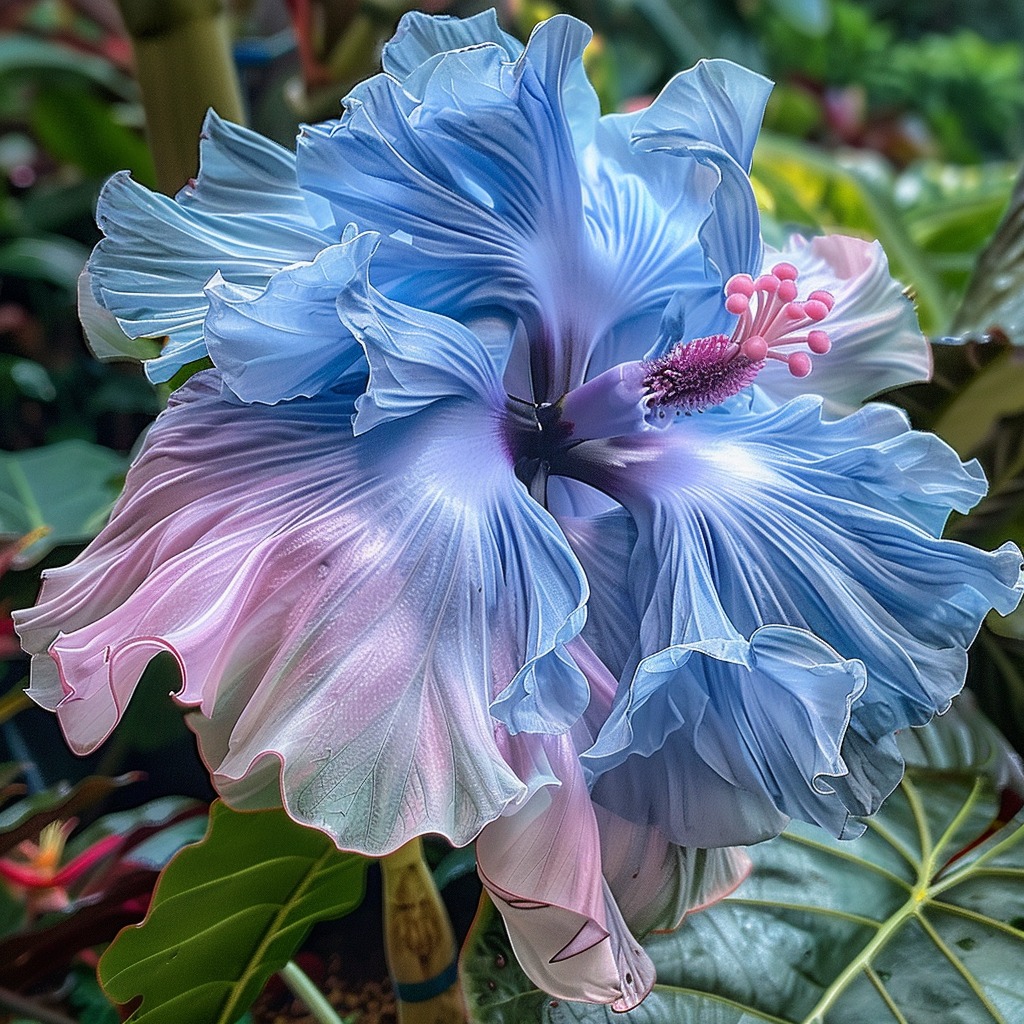
Introduction to Hibiscus
Overview of the Hibiscus Genus
The Hibiscus genus is a captivating group of flowering plants that includes over 200 species, each boasting unique characteristics and adaptations. Native to warm temperate, subtropical, and tropical regions around the world, hibiscus plants are renowned for their stunning flowers, which can be found in a variety of shapes, sizes, and colors. The genus is part of the Malvaceae family, which also includes other popular plants such as cotton and okra.
Hibiscus flowers are typically large and showy, making them a favorite among gardeners and landscapers alike. They can grow as shrubs, small trees, or herbaceous perennials, depending on the species and environmental conditions. The flowers generally have five petals and can range from simple, single forms to complex, double forms. Their vivid colors, which include shades of red, pink, yellow, orange, and white, attract pollinators such as bees and butterflies, playing a vital role in local ecosystems.
In addition to their ornamental value, hibiscus plants are also appreciated for their versatility. Many species are cultivated for their edible flowers, leaves, and seeds, while others are valued for their medicinal properties. As a result, hibiscus has become an integral part of various culinary traditions and herbal remedies worldwide.
Botanical Classification and Family
To understand hibiscus better, it’s essential to delve into its botanical classification. The Hibiscus genus belongs to the Malvaceae family, which encompasses a wide array of flowering plants. Within the Hibiscus genus, there are several subgenera and sections, each containing distinct species. Some of the most commonly known species include Hibiscus rosa-sinensis (Chinese hibiscus), Hibiscus sabdariffa (roselle), and Hibiscus syriacus (rose of Sharon).
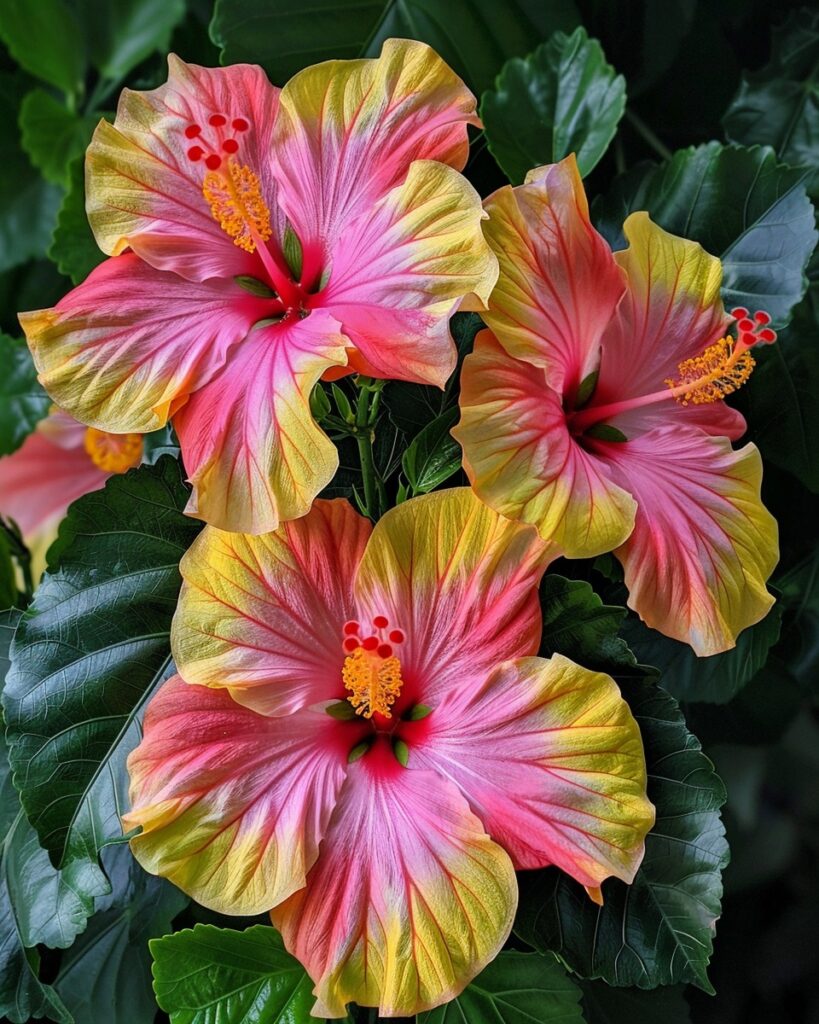
Botanically, hibiscus plants are characterized by their alternate leaves, which can be lobed or entire, and their distinctive flowers, which feature a prominent central pistil surrounded by numerous stamens. The fruit of hibiscus plants is typically a capsule that contains several seeds, allowing for natural propagation. Understanding the classification and family of hibiscus helps gardeners and enthusiasts identify the specific species they wish to cultivate and appreciate the unique traits each brings to the table.
Diverse Species and Their Characteristics
The diversity within the Hibiscus genus is remarkable, with each species exhibiting unique characteristics that cater to different climates, landscapes, and uses. For instance, Hibiscus rosa-sinensis, commonly known as Chinese hibiscus, is a popular ornamental plant characterized by its large, colorful flowers and glossy green leaves. This species thrives in tropical and subtropical regions, making it a staple in gardens and landscapes worldwide.
On the other hand, Hibiscus sabdariffa, or roselle, is cultivated primarily for its edible calyxes, which are used to make herbal teas, jams, and other culinary delights. The tart flavor of roselle makes it a favorite ingredient in many cultures, particularly in Africa and the Caribbean. Its leaves are also edible and can be used in salads or cooked dishes.
Another noteworthy species is Hibiscus syriacus, known as rose of Sharon. This deciduous shrub is prized for its long-lasting blooms that appear throughout the summer months. With its ability to tolerate a range of soil types and conditions, rose of Sharon is often used in landscaping and as a hedge plant.
Each species within the Hibiscus genus offers unique attributes, making them suitable for various applications, whether for ornamental purposes, culinary uses, or medicinal benefits. Understanding these differences allows gardeners and enthusiasts to select the right hibiscus species for their specific needs and preferences.
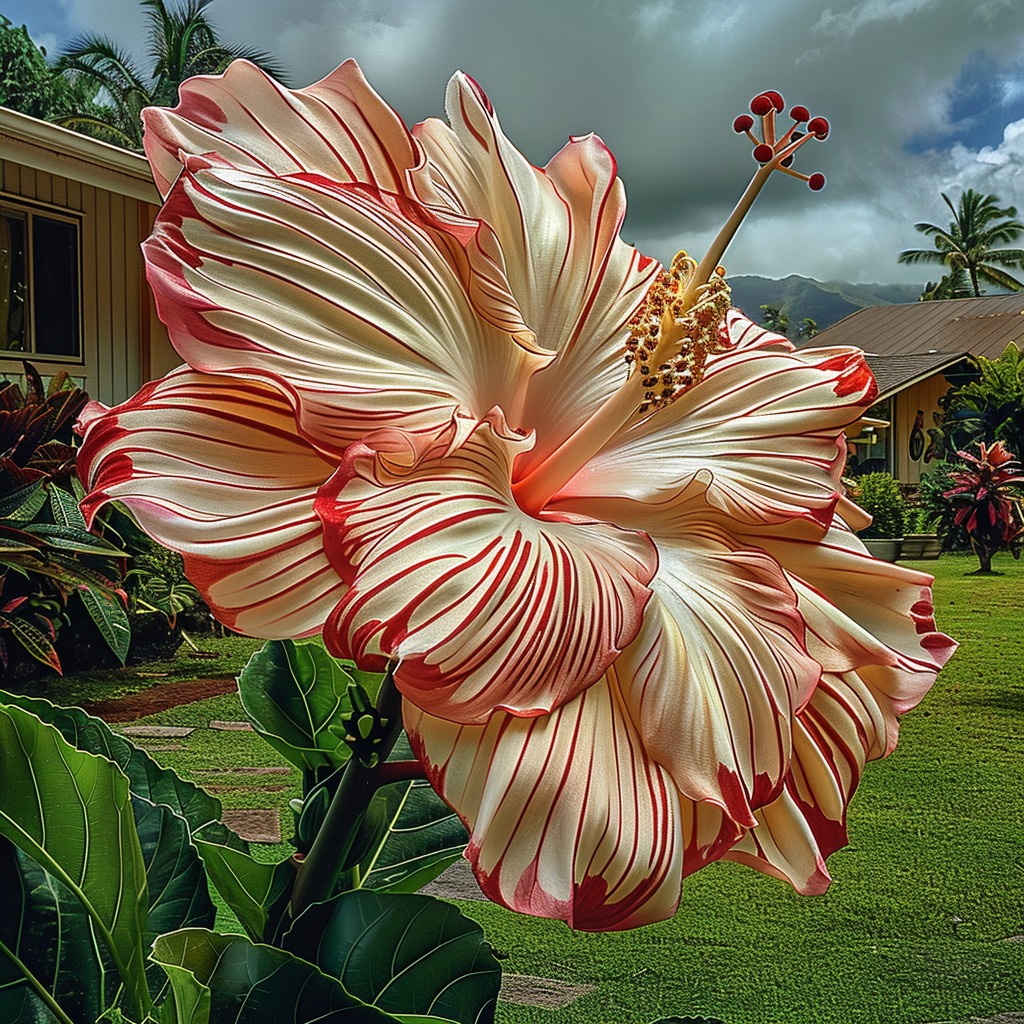
Aesthetic Appeal of Hibiscus
Vibrant Colors and Flower Forms
One of the most alluring aspects of hibiscus is its vibrant colors and diverse flower forms. The large, trumpet-shaped blooms come in an extensive palette, ranging from fiery reds and sunny yellows to soft pastels and pure whites. This wide array of hues allows gardeners to create stunning visual displays in their landscapes, attracting attention and admiration.
The flower forms of hibiscus are equally captivating. While many species feature classic single blooms with five petals, others showcase intricate double blooms that resemble ruffled silk. Some varieties even exhibit unique patterns or gradients, adding an extra layer of intrigue to their appearance. The sheer size of hibiscus flowers, often measuring up to six inches in diameter, ensures they remain a focal point in any garden setting.
In addition to their beauty, hibiscus flowers have a delicate, ephemeral quality, with blooms lasting only a day or two before wilting. This transient nature adds to their charm, encouraging gardeners to appreciate each bloom fully while anticipating the next wave of flowers to emerge.
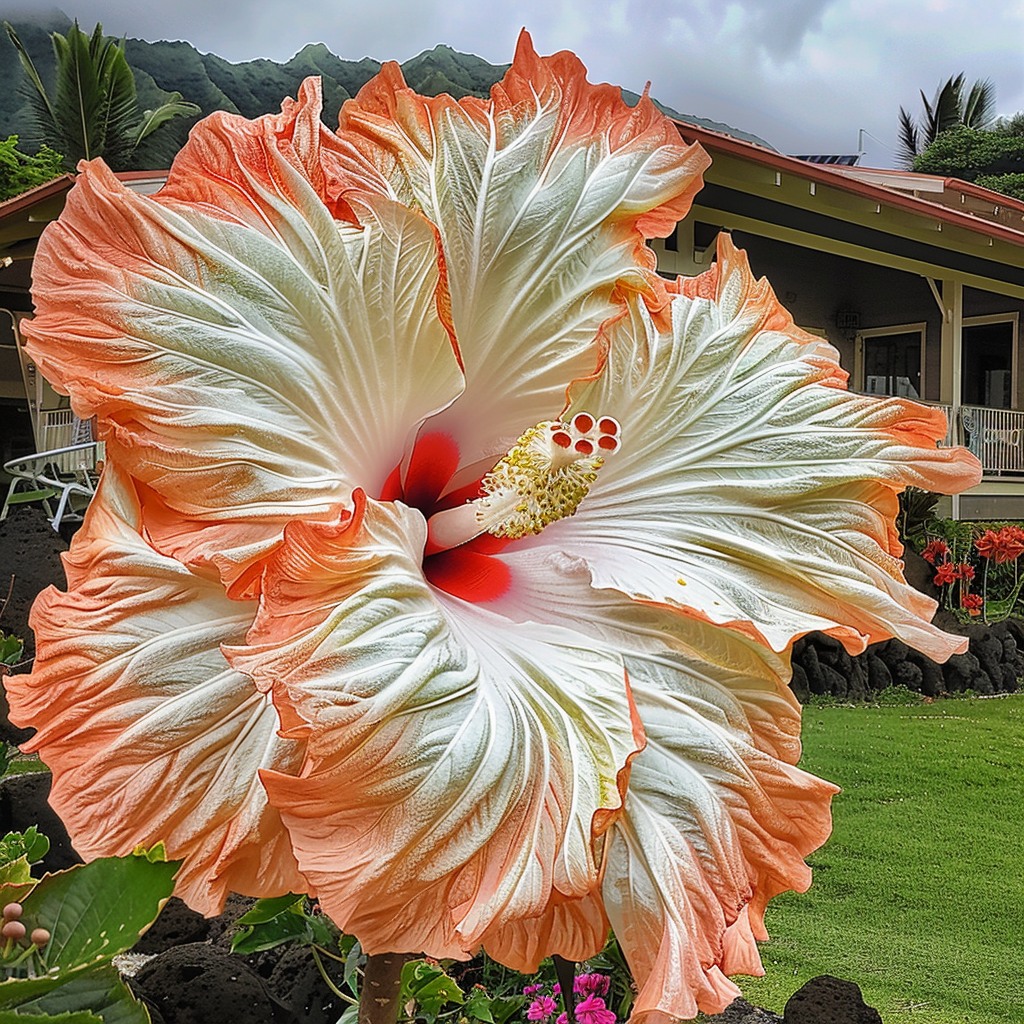
Popular Varieties for Gardens
When it comes to selecting hibiscus varieties for gardens, several popular options stand out due to their exceptional beauty and adaptability. One of the most sought-after varieties is Hibiscus rosa-sinensis, or Chinese hibiscus. Known for its large, showy flowers and lush foliage, this species is commonly grown in tropical and subtropical regions. Its ability to bloom year-round makes it a favorite among gardeners seeking continuous color.
Another popular choice is Hibiscus syriacus, or rose of Sharon. This hardy shrub produces abundant blooms throughout the summer, making it an excellent option for borders and hedges. Available in various colors, including blue, purple, and white, rose of Sharon adds a delightful touch to any landscape.
For those interested in edible varieties, Hibiscus sabdariffa, or roselle, is an excellent choice. Not only does it produce beautiful, vibrant red flowers, but its calyxes are also harvested for culinary use, making it a dual-purpose plant in the garden.
Other notable varieties include Hibiscus moscheutos (hardy hibiscus), which features large, dinner-plate-sized blooms and thrives in colder climates, and Hibiscus acetosella (African rose mallow), known for its striking maroon foliage and unique flower shape. Each of these varieties brings its own charm and character to the garden, allowing for endless possibilities in landscape design.
Incorporating Hibiscus in Landscape Design
Incorporating hibiscus into landscape design can elevate the overall aesthetic and create a vibrant, inviting atmosphere. Due to their striking flowers and lush foliage, hibiscus plants can serve as focal points in garden beds, drawing the eye and providing a sense of drama. When planning a garden layout, consider grouping hibiscus plants together to create a bold statement or interspersing them among other flowering plants for a more eclectic look.
Hibiscus can also be used effectively in mixed borders, where their height and form can complement shorter plants. Pairing hibiscus with low-growing perennials or annuals can create a layered effect, adding depth and interest to the landscape. Additionally, using contrasting colors and textures can enhance the visual appeal of the garden, making hibiscus an ideal candidate for creative combinations.
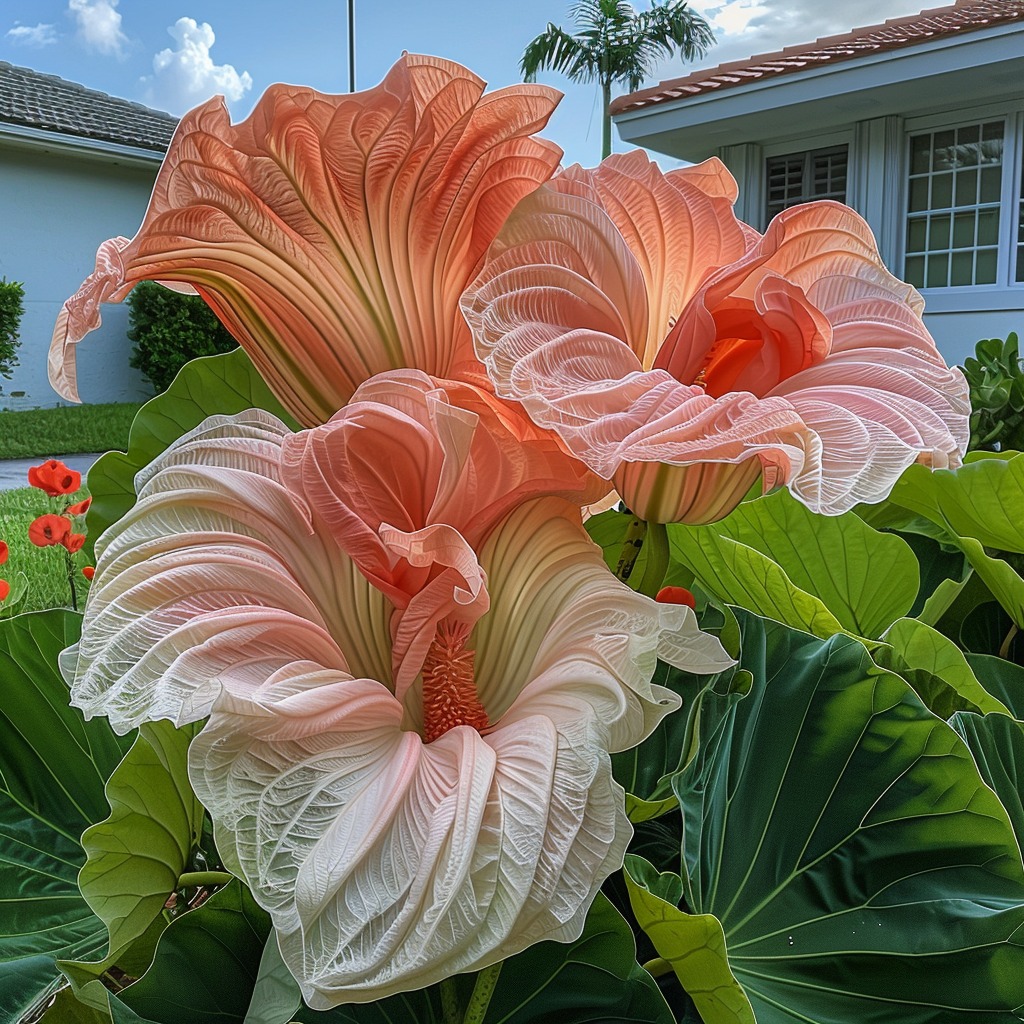
For those looking to create a tropical oasis, hibiscus plants are essential. Their lush, exotic appearance evokes a sense of paradise, making them perfect for poolside gardens or outdoor entertaining spaces. Consider planting hibiscus near water features or patios to create a serene ambiance, where the vibrant blooms can be enjoyed up close.
Finally, hibiscus can also be utilized in container gardening, allowing for flexibility in placement and design. Large pots filled with hibiscus can be strategically placed on patios, balconies, or entryways, providing bursts of color and fragrance wherever they are displayed. By thoughtfully incorporating hibiscus into landscape design, gardeners can create stunning outdoor spaces that celebrate the beauty of this remarkable genus.
Cultivating Hibiscus
Understanding Optimal Growing Conditions
Cultivating hibiscus successfully begins with understanding the optimal growing conditions required for these vibrant plants. Hibiscus thrives in warm, sunny environments, making them ideal for tropical and subtropical climates. However, many species can adapt to a range of conditions, including temperate zones, provided they receive adequate care.
When selecting a location for hibiscus, choose a spot that receives full sun for at least six hours a day. This exposure to sunlight encourages robust growth and abundant blooming. In areas with intense heat, some afternoon shade may be beneficial to prevent leaf scorch and maintain overall plant health.
Temperature is another crucial factor in cultivating hibiscus. Most species prefer temperatures between 60°F and 90°F (15°C to 32°C). While some varieties can tolerate cooler temperatures, prolonged exposure to frost can damage or kill the plants. Therefore, it’s essential to monitor local weather conditions and take necessary precautions, such as bringing potted hibiscus indoors during colder months.
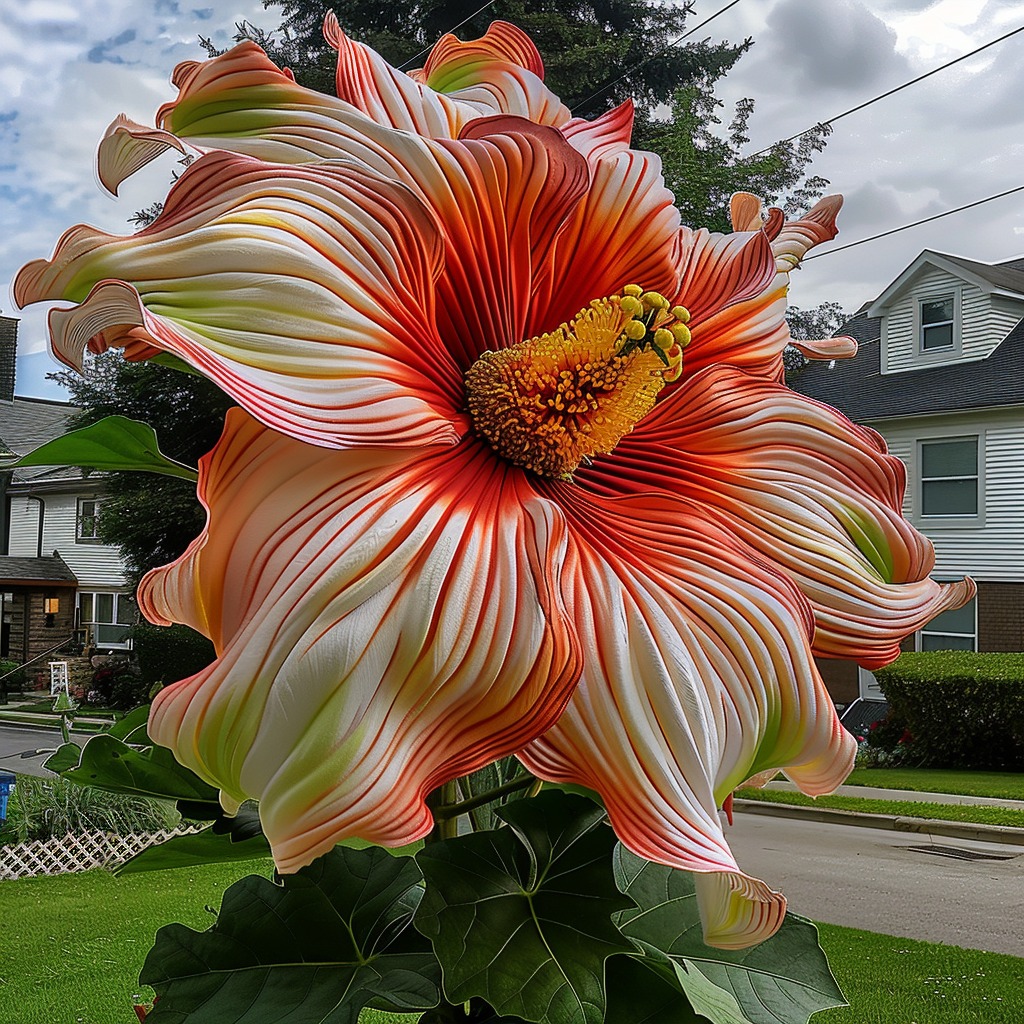
Soil Requirements and Amendments
The soil in which hibiscus is planted plays a significant role in its overall health and vitality. Hibiscus prefers well-draining soil that retains some moisture without becoming waterlogged. A loamy or sandy soil mix enriched with organic matter is ideal for promoting healthy root development and preventing issues related to poor drainage.
Before planting hibiscus, consider conducting a soil test to assess pH levels and nutrient content. Hibiscus plants thrive in slightly acidic to neutral soil, with a pH range of 6.0 to 7.0. If the soil is too alkaline, amendments such as sulfur or peat moss can be added to lower the pH. Conversely, if the soil is too acidic, lime can be incorporated to raise the pH.
Regularly amending the soil with organic compost or well-rotted manure can enhance fertility and improve soil structure. This practice not only provides essential nutrients for hibiscus but also promotes beneficial microbial activity, contributing to overall plant health. By ensuring the right soil conditions, gardeners can set the stage for thriving hibiscus plants.
Sunlight and Watering Needs
Sunlight and watering are critical components of successful hibiscus cultivation. As previously mentioned, hibiscus plants require full sun for optimal growth and blooming. Insufficient sunlight can lead to leggy growth and reduced flowering, diminishing the plant’s overall appeal. Gardeners should aim to provide at least six hours of direct sunlight each day, particularly during the growing season.
Watering hibiscus appropriately is equally important. These plants prefer consistently moist soil, but overwatering can lead to root rot and other issues. It’s essential to strike a balance between keeping the soil adequately hydrated and avoiding waterlogged conditions. A general rule of thumb is to water hibiscus deeply once or twice a week, allowing the top inch of soil to dry out between waterings.
During hot, dry spells, hibiscus may require more frequent watering to prevent stress and promote healthy growth. Mulching around the base of the plant can help retain soil moisture and regulate temperature, reducing the frequency of watering needed. By paying attention to sunlight and watering needs, gardeners can ensure their hibiscus plants thrive and produce stunning blooms.
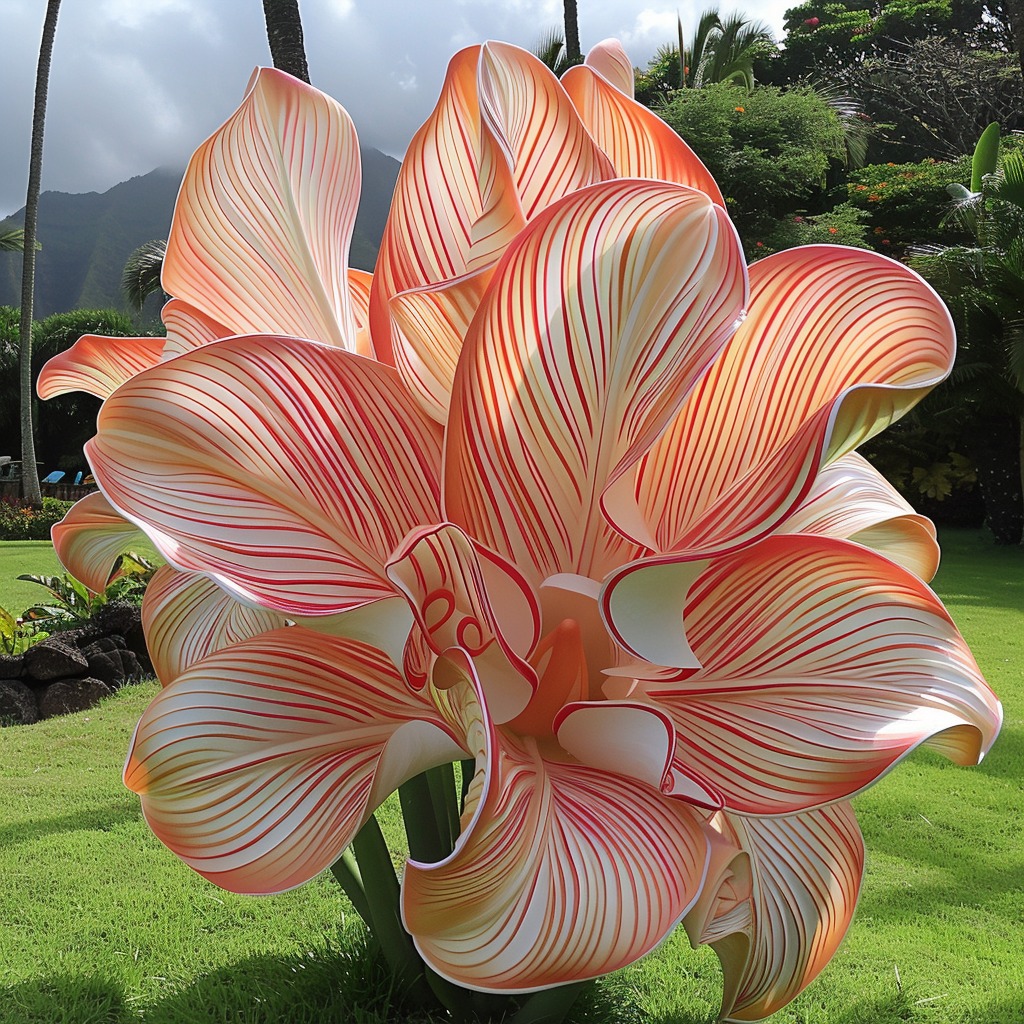
Common Pests and Diseases
Like all plants, hibiscus is susceptible to various pests and diseases that can impact its health and appearance. Common pests that may affect hibiscus include aphids, spider mites, and whiteflies. These insects can cause damage by feeding on the sap of the plant, leading to stunted growth and yellowing leaves. Regularly inspecting hibiscus for signs of infestation and implementing appropriate pest control measures, such as insecticidal soap or neem oil, can help protect the plants.
Diseases such as root rot, powdery mildew, and leaf spot can also pose challenges for hibiscus growers. Root rot often occurs due to overwatering or poorly draining soil, while powdery mildew thrives in humid conditions. To prevent these issues, it’s essential to maintain proper watering practices, ensure good air circulation around the plants, and promptly remove any affected leaves.
In addition to monitoring for pests and diseases, practicing good garden hygiene can significantly reduce the risk of infestations. Cleaning up fallen leaves and debris around hibiscus plants can help eliminate potential breeding grounds for pests and pathogens. By staying vigilant and proactive, gardeners can keep their hibiscus plants healthy and flourishing.
Harvesting and Maintenance
Pruning Techniques for Healthy Growth
Pruning is an essential aspect of hibiscus maintenance that promotes healthy growth and encourages abundant blooming. Regular pruning helps shape the plant, remove dead or damaged wood, and stimulate new growth. The best time to prune hibiscus is in late winter or early spring, just before the growing season begins.
When pruning hibiscus, start by removing any dead or diseased branches. This practice not only improves the plant’s appearance but also reduces the risk of disease spreading. Next, focus on shaping the plant by cutting back overly long or leggy stems. Aim to maintain a balanced shape while allowing light and air to penetrate the center of the plant.

For flowering varieties, consider pinching back the tips of young shoots during the growing season. This technique encourages bushier growth and promotes the development of more blooms. However, avoid excessive pruning, as hibiscus flowers develop on new growth, and cutting back too much can reduce flowering potential.
Seasonal Care Tips
Seasonal care is crucial for maintaining the health and vitality of hibiscus plants throughout the year. During the growing season, which typically spans from spring to fall, regular watering, fertilization, and pest management are essential. Fertilizing hibiscus every four to six weeks with a balanced fertilizer can support vigorous growth and flowering.
As temperatures begin to drop in the fall, it’s important to prepare hibiscus for the cooler months ahead. If growing in containers, consider bringing potted hibiscus indoors to protect them from frost. For garden-planted hibiscus, applying a layer of mulch around the base can help insulate the roots and retain moisture.
In late winter or early spring, as the threat of frost diminishes, resume regular care practices. Monitor for any signs of disease or pests and address them promptly. By following seasonal care tips, gardeners can ensure their hibiscus plants remain healthy and vibrant throughout the year.

Propagation Methods
Propagation is an exciting way to expand your hibiscus collection or share these beautiful plants with friends and family. There are several methods for propagating hibiscus, including seed propagation, stem cuttings, and division.
Seed propagation involves collecting seeds from mature hibiscus pods and sowing them in a well-draining potting mix. Keep the soil consistently moist and provide warmth and light to encourage germination. This method may take longer to produce flowering plants, as seedlings can take several months to mature.
Stem cuttings are a more common and faster method for propagating hibiscus. Select healthy, non-flowering stems and cut them into sections about six inches long. Remove the lower leaves and dip the cut end in rooting hormone before planting in a well-draining potting mix. Keep the cuttings in a warm, humid environment until roots develop, usually within a few weeks.
Dividing established hibiscus plants is another effective method, particularly for perennial varieties. Carefully dig up the plant and separate the root ball into smaller sections, ensuring each division has healthy roots and stems. Replant the divisions in suitable locations, and they will establish themselves quickly.
By employing these propagation methods, gardeners can enjoy the beauty of hibiscus in various settings and share their love for this remarkable genus with others.

Health Benefits of Hibiscus
Nutritional Profile
Hibiscus is not only admired for its beauty but also for its impressive nutritional profile. The flowers, leaves, and calyxes of hibiscus plants are rich in vitamins, minerals, and antioxidants, making them a valuable addition to a healthy diet. Hibiscus flowers are particularly high in vitamin C, which plays a crucial role in supporting the immune system and promoting skin health.
In addition to vitamin C, hibiscus contains various phytonutrients, including flavonoids and anthocyanins, which contribute to its vibrant color and offer antioxidant properties. These compounds help combat oxidative stress in the body, reducing the risk of chronic diseases and promoting overall well-being.
Furthermore, hibiscus is low in calories and contains no fat, making it an excellent choice for those seeking to maintain a balanced diet. Whether consumed as a tea, incorporated into dishes, or enjoyed fresh, hibiscus provides a nutritious boost to meals and beverages.
Hibiscus Tea and Its Properties
Hibiscus tea, made from the dried calyxes of hibiscus flowers, has gained popularity worldwide for its refreshing taste and numerous health benefits. This herbal infusion boasts a tart, fruity flavor reminiscent of cranberries, making it a delightful beverage served hot or cold.
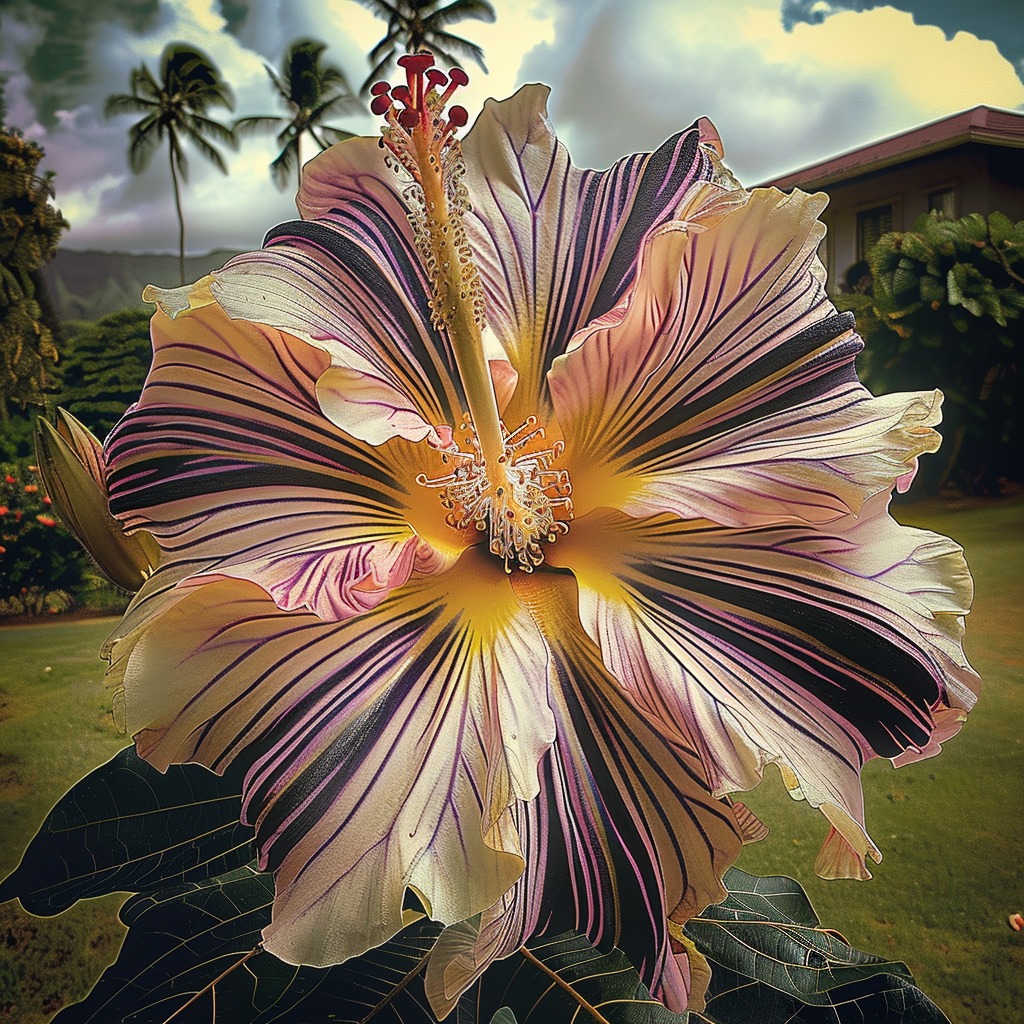
One of the most notable properties of hibiscus tea is its potential to lower blood pressure. Several studies have shown that regular consumption of hibiscus tea may help reduce systolic and diastolic blood pressure in individuals with hypertension. The presence of anthocyanins and other bioactive compounds in hibiscus is believed to contribute to this effect by promoting vasodilation and improving blood flow.
In addition to its cardiovascular benefits, hibiscus tea may also aid in digestion and support liver health. The antioxidants present in hibiscus can help protect the liver from damage caused by toxins and oxidative stress. Drinking hibiscus tea regularly may also promote healthy digestion by stimulating the production of digestive enzymes.
Potential Effects on Blood Pressure
The potential effects of hibiscus on blood pressure have garnered significant attention in recent years, particularly as more people seek natural remedies for managing hypertension. Research indicates that hibiscus tea may effectively lower both systolic and diastolic blood pressure, making it a promising option for individuals with elevated blood pressure levels.
Several clinical studies have demonstrated that regular consumption of hibiscus tea can lead to significant reductions in blood pressure. The exact mechanism behind this effect is still being studied, but it is believed that the antioxidants and anti-inflammatory properties of hibiscus contribute to improved vascular function and reduced arterial stiffness.
For those considering incorporating hibiscus tea into their daily routine, it’s essential to consult with a healthcare professional, especially if currently taking medications for hypertension. While hibiscus tea is generally safe for most individuals, it may interact with certain medications, and personalized guidance is always recommended.
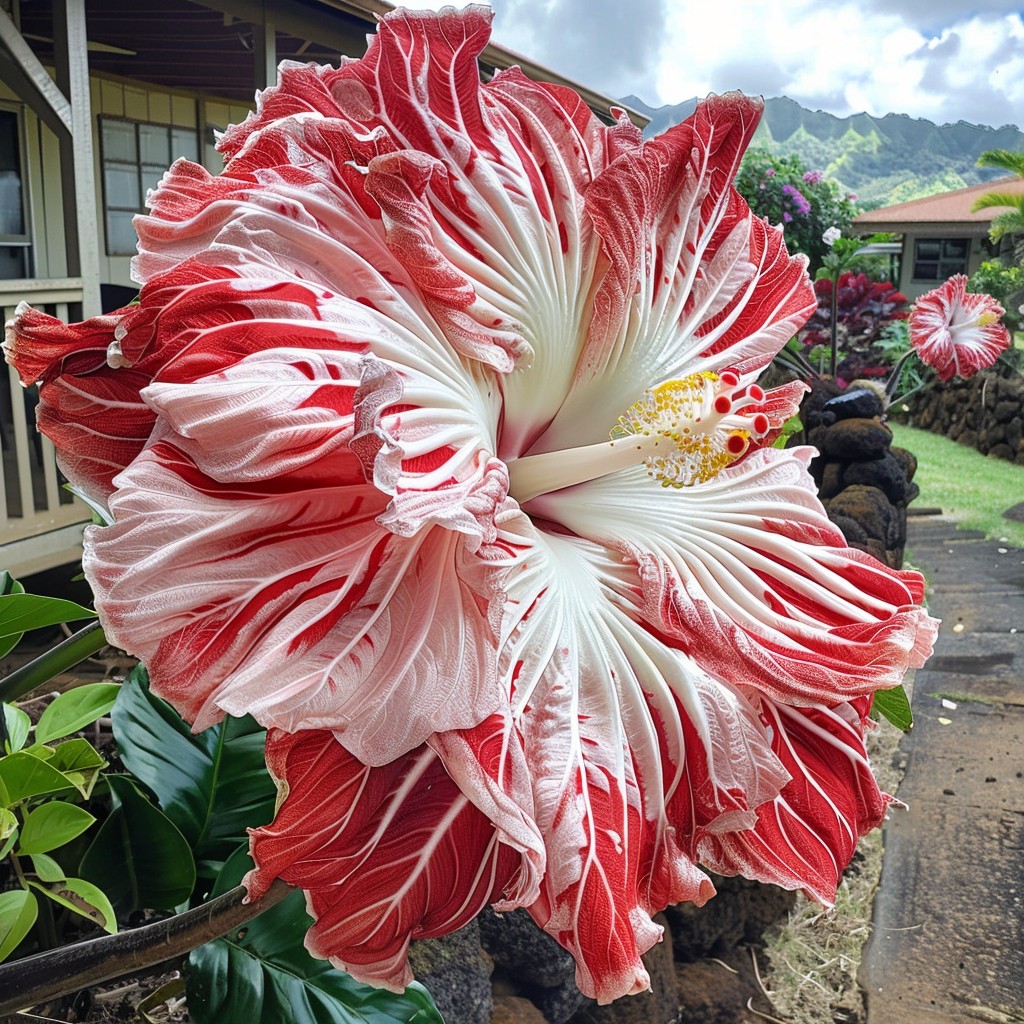
Impact on Cholesterol and Blood Sugar Levels
In addition to its potential effects on blood pressure, hibiscus has also been studied for its impact on cholesterol and blood sugar levels. Some research suggests that hibiscus extract may help lower LDL (bad) cholesterol levels while increasing HDL (good) cholesterol levels, contributing to improved heart health.
Furthermore, hibiscus may play a role in regulating blood sugar levels. Preliminary studies indicate that hibiscus extract may help improve insulin sensitivity and reduce fasting blood sugar levels in individuals with type 2 diabetes. The presence of polyphenols and flavonoids in hibiscus is believed to contribute to these effects by modulating glucose metabolism.
While more research is needed to fully understand the extent of hibiscus’s impact on cholesterol and blood sugar levels, incorporating hibiscus tea and other hibiscus-based products into a balanced diet may offer additional health benefits for those seeking to manage these conditions.
Hibiscus in Traditional Medicine
Historical Uses Across Cultures
Hibiscus has a long history of use in traditional medicine across various cultures, where it has been valued for its therapeutic properties. Ancient civilizations recognized the potential health benefits of hibiscus and incorporated it into their healing practices.

In Africa, hibiscus has been used for centuries to treat a range of ailments, including high blood pressure, digestive issues, and respiratory infections. Traditional healers often prepare herbal infusions or decoctions from hibiscus flowers and leaves to harness their medicinal properties.
Similarly, in Ayurvedic medicine, hibiscus is regarded as a valuable herb for promoting overall health and wellness. It is believed to have cooling properties and is often used to balance excess heat in the body. Hibiscus is also used in hair care, with extracts applied to promote healthy hair growth and scalp health.
In the Caribbean, hibiscus tea is a popular remedy for various conditions, including colds, fevers, and digestive problems. The tart flavor of hibiscus tea is not only refreshing but also serves as a natural remedy for hydration and nourishment.
Modern Research Findings
Modern research has begun to validate many of the traditional uses of hibiscus, shedding light on its potential health benefits. Scientific studies have explored the pharmacological properties of hibiscus, revealing its antioxidant, anti-inflammatory, and antimicrobial effects.
Research has shown that hibiscus extracts possess potent antioxidant activity, helping to combat oxidative stress and reduce inflammation in the body. These properties may contribute to the plant’s potential in preventing chronic diseases, including heart disease and certain cancers.
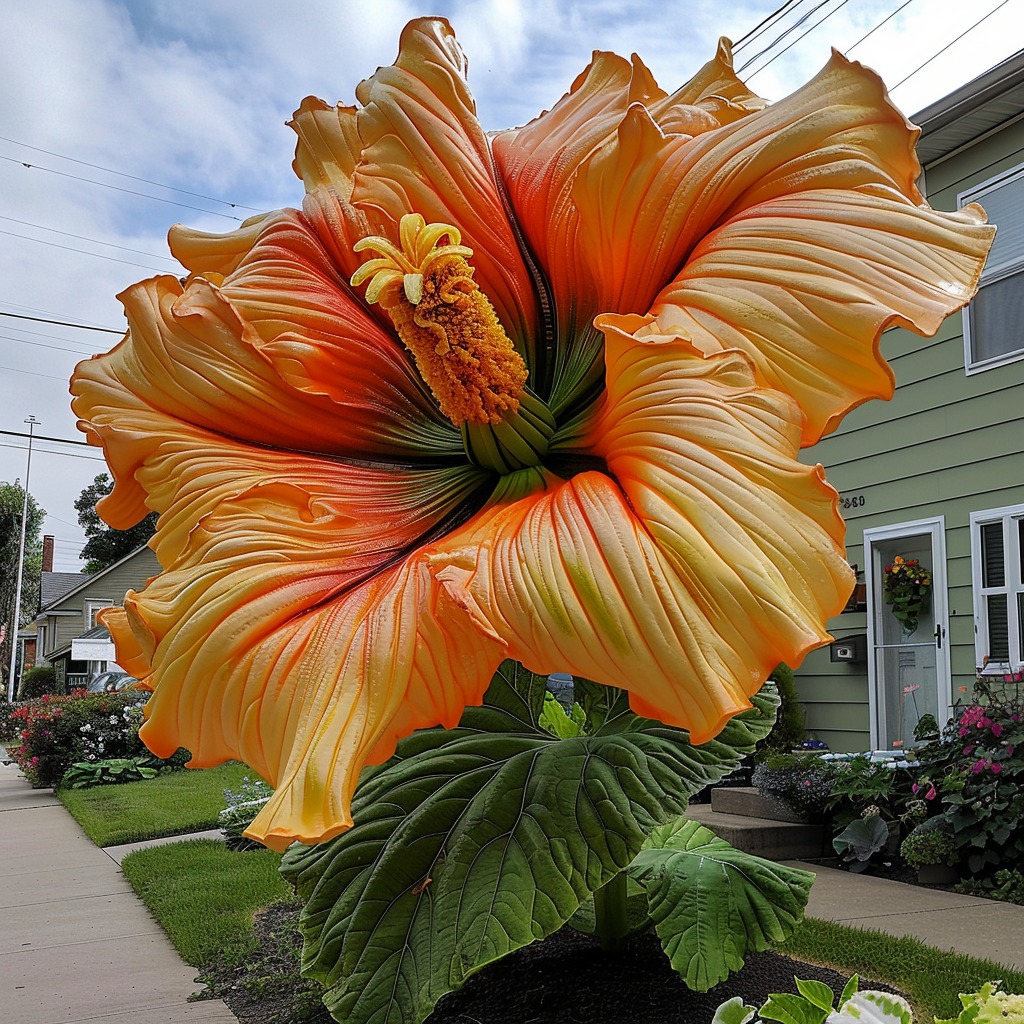
Furthermore, studies have investigated the effects of hibiscus on various health markers, including blood pressure, cholesterol levels, and blood sugar regulation. The findings suggest that hibiscus may offer protective benefits for cardiovascular health and metabolic function, aligning with traditional practices that have long recognized its therapeutic potential.
As research continues to evolve, hibiscus is gaining recognition as a valuable addition to modern herbal medicine, bridging the gap between traditional knowledge and contemporary scientific understanding.
Integrating Hibiscus into a Holistic Health Approach
Integrating hibiscus into a holistic health approach involves recognizing its multifaceted benefits and incorporating it into daily routines. Whether consumed as a tea, used in culinary creations, or applied in skincare, hibiscus can enhance overall well-being.
For those seeking to incorporate hibiscus into their diets, enjoying a cup of hibiscus tea is a simple yet effective way to reap its health benefits. Experimenting with hibiscus-infused recipes, such as salads, smoothies, or desserts, can add a burst of flavor and nutrition to meals.
In addition to dietary integration, hibiscus can also be included in holistic wellness practices. For example, using hibiscus-infused oils or extracts in skincare routines can promote healthy skin and provide soothing effects. The plant’s natural properties can be harnessed for self-care rituals, enhancing both physical and emotional well-being.
By embracing hibiscus as part of a holistic health approach, individuals can tap into its rich history, nutritional benefits, and therapeutic properties, fostering a deeper connection to nature and enhancing their overall quality of life.
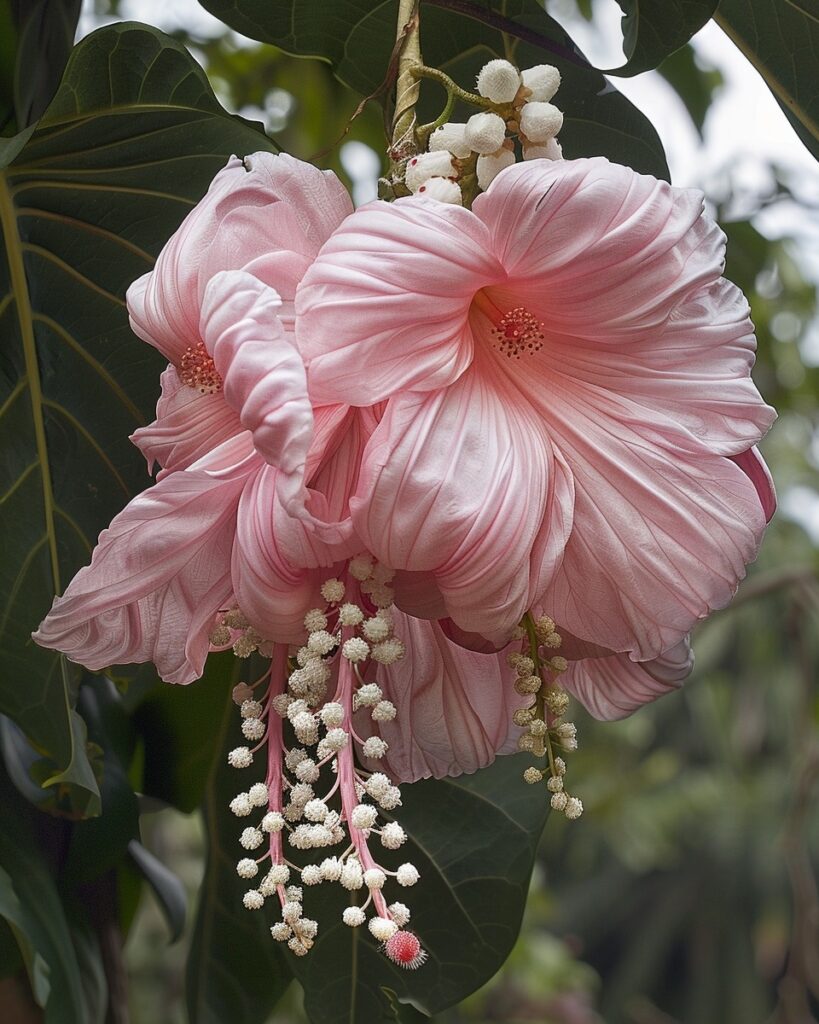
Cultural Significance of Hibiscus
Symbolism in Different Cultures
Hibiscus holds profound cultural significance in various societies around the world, often symbolizing beauty, love, and hospitality. In many tropical cultures, hibiscus flowers are associated with femininity and grace, making them a popular choice for adornment in traditional ceremonies and celebrations.
In Hawaiian culture, hibiscus is revered as a symbol of beauty and is often worn as a floral lei or tucked behind the ear. The placement of the flower carries meaning; wearing it on the left side signifies that the wearer is taken, while wearing it on the right side indicates availability. This tradition highlights the hibiscus’s role in expressing identity and social status.
In India, hibiscus is considered sacred and is often used in religious rituals and offerings. The vibrant red flowers are associated with the goddess Kali and are believed to bring blessings and prosperity. Hibiscus is also used in traditional Ayurvedic medicine, reinforcing its cultural importance in promoting health and well-being.
Role in Ceremonies and Celebrations
The presence of hibiscus flowers in ceremonies and celebrations underscores their cultural significance and beauty. In many cultures, hibiscus is used as decoration for weddings, festivals, and other special occasions. The vibrant blooms add a festive touch, creating a joyful atmosphere that enhances the celebratory spirit.
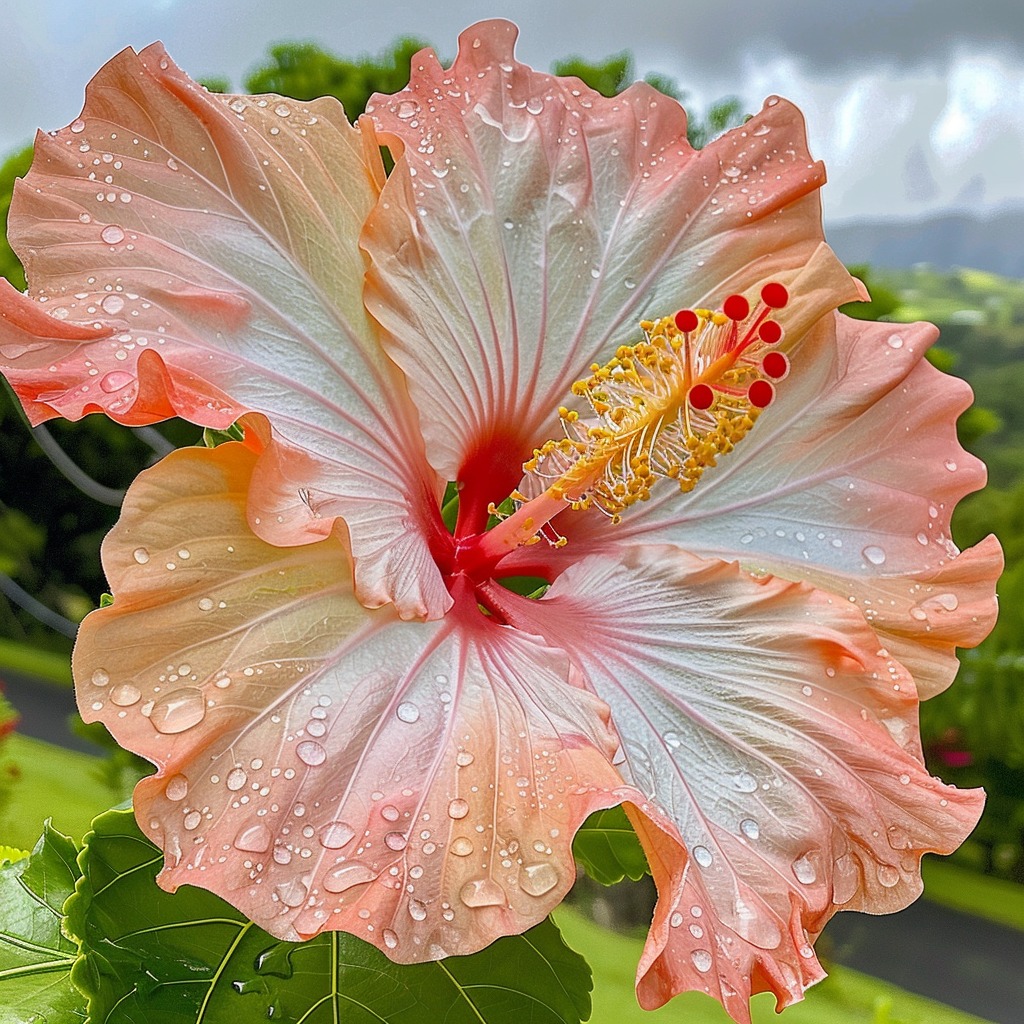
In the Caribbean, hibiscus is often featured in traditional events, such as carnivals and parades. The flowers are used to create elaborate floral arrangements and costumes, showcasing the region’s rich cultural heritage. The bright colors and striking forms of hibiscus contribute to the lively ambiance of these festivities.
In addition to weddings and festivals, hibiscus is also used in memorial services and rituals to honor loved ones. The flowers symbolize remembrance and serve as a poignant reminder of the beauty of life. This multifaceted role in various ceremonies reflects the deep-rooted cultural connections that hibiscus has forged over generations.
Hibiscus as a Unifying Element in Heritage
Hibiscus serves as a unifying element in heritage, connecting people across cultures and generations. Its widespread presence in different parts of the world highlights the shared appreciation for beauty and nature that transcends geographical boundaries.
In many cultures, hibiscus is celebrated not only for its aesthetic appeal but also for its practical uses in cuisine and traditional medicine. This dual significance fosters a sense of community and belonging, as individuals come together to share knowledge, recipes, and stories related to hibiscus.
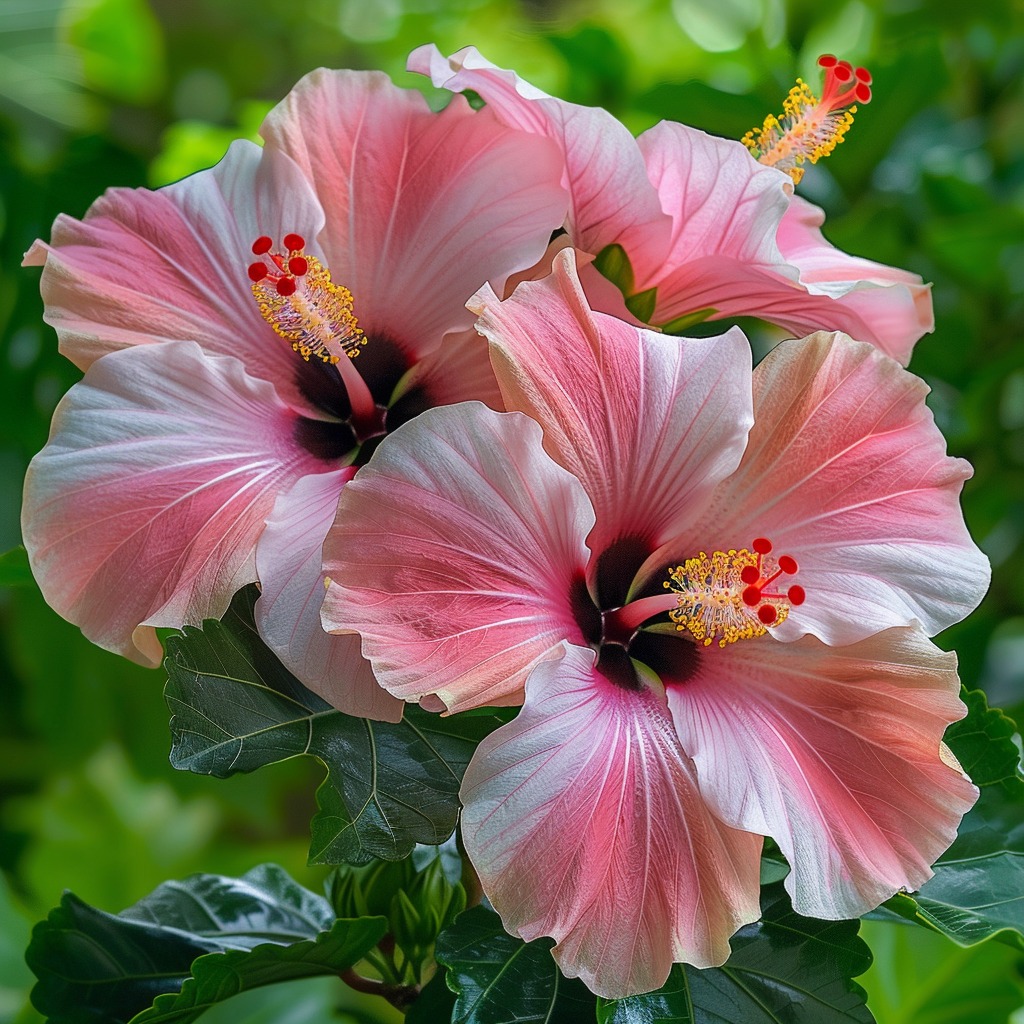
Moreover, hibiscus has become a symbol of resilience and adaptability, mirroring the experiences of communities that embrace diversity and unity. Just as hibiscus flourishes in various environments, communities can thrive when they celebrate their differences and work collaboratively toward common goals.
By recognizing hibiscus as a unifying element in heritage, individuals can foster a deeper appreciation for cultural diversity and the interconnectedness of humanity. The beauty of hibiscus serves as a reminder of the richness of our shared experiences and the importance of preserving and honoring cultural traditions.
Environmental Impact
Hibiscus and Biodiversity
Hibiscus plays a vital role in promoting biodiversity within ecosystems. As a flowering plant, it attracts various pollinators, including bees, butterflies, and hummingbirds, which are essential for maintaining healthy ecosystems. These pollinators contribute to the reproduction of hibiscus and other flowering plants, ensuring the continuation of diverse plant species.
In addition to supporting pollinators, hibiscus plants provide habitat and food sources for various wildlife species. The foliage and flowers offer shelter for insects and birds, while the seeds serve as a food source for small mammals and birds. By cultivating hibiscus in gardens and landscapes, individuals can contribute to local biodiversity and support the health of surrounding ecosystems.
Furthermore, hibiscus can be integrated into conservation efforts aimed at restoring native habitats. Many species of hibiscus are native to specific regions, and planting these native varieties can help preserve local flora and fauna. By promoting the growth of native hibiscus, gardeners can contribute to the overall health and resilience of their local ecosystems.
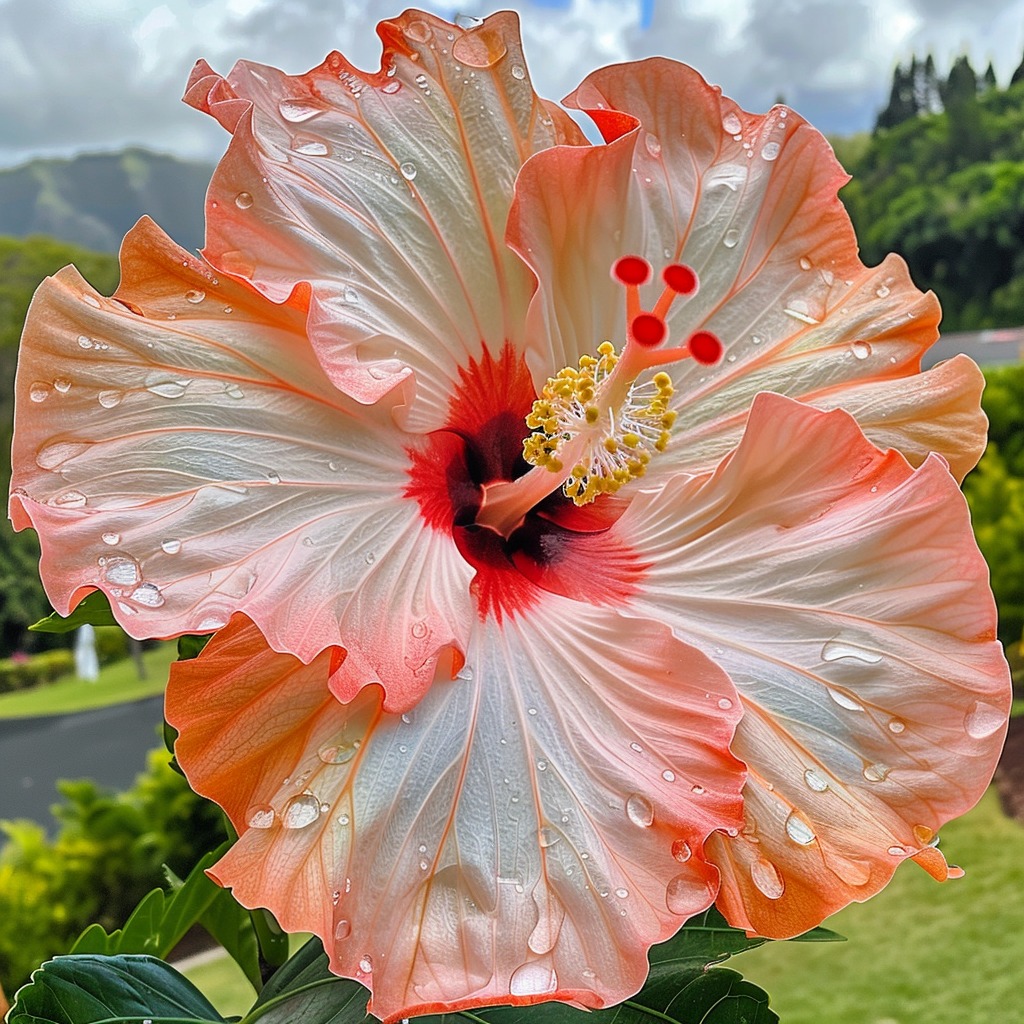
Importance of Native Species
The importance of native hibiscus species cannot be overstated, as they play a crucial role in maintaining ecological balance and supporting local wildlife. Native hibiscus varieties are adapted to their specific environments, making them more resilient to local pests, diseases, and climate conditions.
Planting native hibiscus species in gardens and landscapes can help restore natural habitats and promote biodiversity. These plants provide essential resources for native pollinators and wildlife, contributing to the overall health of the ecosystem. Additionally, native hibiscus species often require less maintenance and irrigation than non-native varieties, making them a sustainable choice for gardeners.
By prioritizing the cultivation of native hibiscus species, individuals can actively participate in conservation efforts and contribute to the preservation of local biodiversity. This commitment to environmental stewardship aligns with broader sustainability goals and fosters a deeper connection to the natural world.
Sustainable Gardening Practices
Sustainable gardening practices are essential for promoting the health of hibiscus plants and the surrounding environment. By adopting eco-friendly techniques, gardeners can minimize their impact on natural resources and contribute to a healthier planet.
One key aspect of sustainable gardening is water conservation. Implementing efficient watering practices, such as drip irrigation or rainwater harvesting, can help reduce water usage while ensuring hibiscus plants receive adequate moisture. Mulching around the base of plants can also help retain soil moisture and suppress weeds, further conserving water.
Additionally, using organic fertilizers and pest control methods can enhance soil health and reduce chemical runoff into local waterways. Composting kitchen scraps and yard waste can provide nutrient-rich organic matter for hibiscus plants, promoting healthy growth without the need for synthetic fertilizers.
Encouraging biodiversity in the garden is another vital component of sustainable gardening. Planting a variety of flowering plants, including hibiscus, can attract beneficial insects and pollinators, creating a balanced ecosystem. By fostering a diverse garden environment, individuals can support local wildlife and contribute to the overall health of their surroundings.
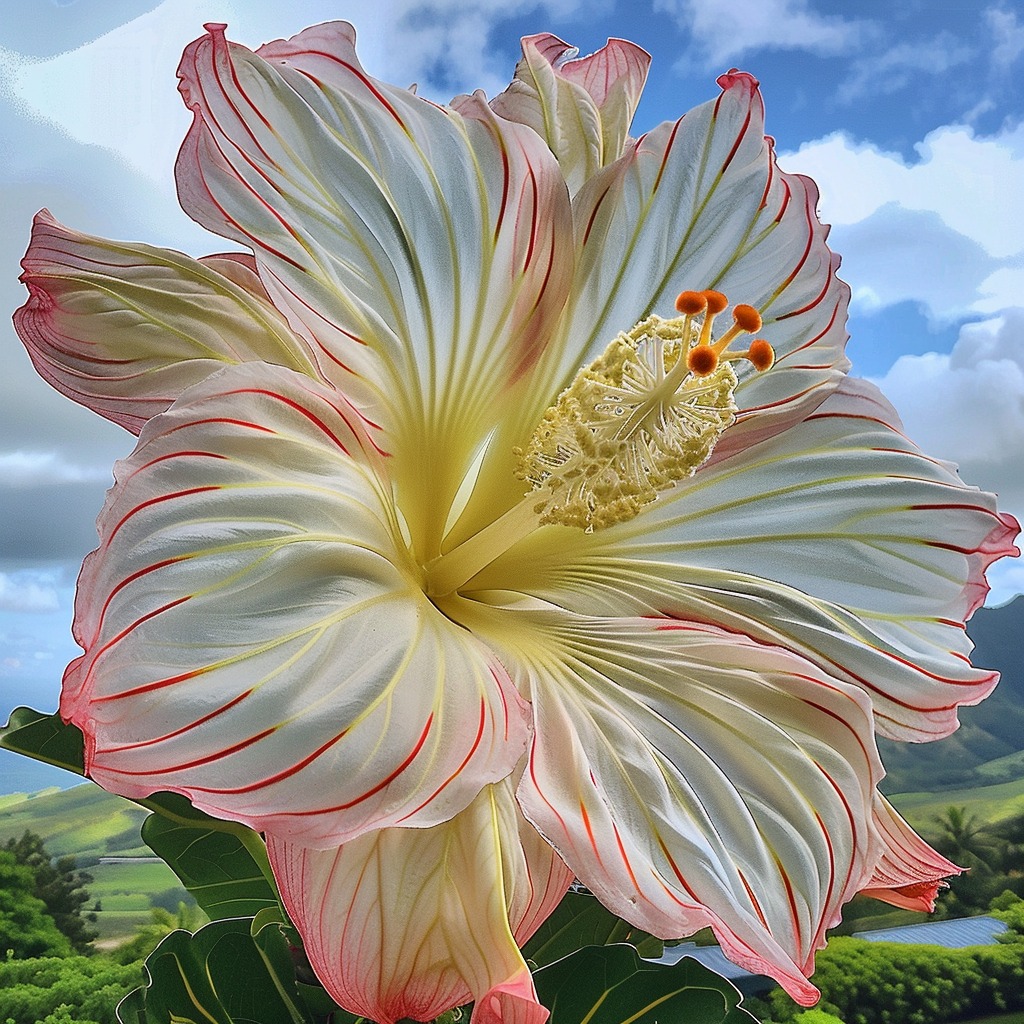
Recipes Featuring Hibiscus
Making Hibiscus Tea
Making hibiscus tea is a simple and rewarding process that allows individuals to enjoy the refreshing flavors and health benefits of this vibrant flower. To prepare hibiscus tea, start by gathering dried hibiscus calyxes, which can be purchased from health food stores or online.
Begin by boiling water in a pot or kettle. Once the water reaches a rolling boil, remove it from the heat and add the dried hibiscus calyxes. The typical ratio is about one tablespoon of dried hibiscus per cup of water, but this can be adjusted based on personal preference for strength and flavor.
Allow the hibiscus to steep for about 10 to 15 minutes, depending on how strong you prefer your tea. The longer the tea steeps, the more intense the flavor and color will become. After steeping, strain the tea to remove the calyxes and pour it into a cup. Sweeten with honey or agave syrup if desired, and enjoy it hot or chilled over ice.
Hibiscus tea can also be infused with additional flavors by adding ingredients such as ginger, mint, or citrus slices during the steeping process. Experimenting with different flavor combinations can enhance the tea’s taste and create a delightful beverage for any occasion.
Culinary Uses in Dishes and Beverages
Beyond tea, hibiscus can be creatively incorporated into various culinary dishes and beverages. The tart flavor of hibiscus lends itself well to both sweet and savory applications, making it a versatile ingredient in the kitchen.
In salads, fresh hibiscus leaves can be used as a flavorful addition, providing a unique taste and vibrant color. The flowers can also be used as a garnish, adding an elegant touch to dishes. For a refreshing salad dressing, consider blending hibiscus tea with olive oil, vinegar, and herbs for a tangy vinaigrette.
Hibiscus can also be used in desserts, such as sorbets, jellies, or cakes. Infusing syrups with hibiscus can create delicious toppings for pancakes, waffles, or ice cream. The vibrant color of hibiscus adds visual appeal to any dish, making it a delightful choice for culinary presentations.
In beverages, hibiscus can be combined with other fruits and herbs to create refreshing cocktails or mocktails. Mixing hibiscus tea with sparkling water, fresh fruit juices, or spirits can result in a colorful and flavorful drink that is perfect for gatherings or summer parties.
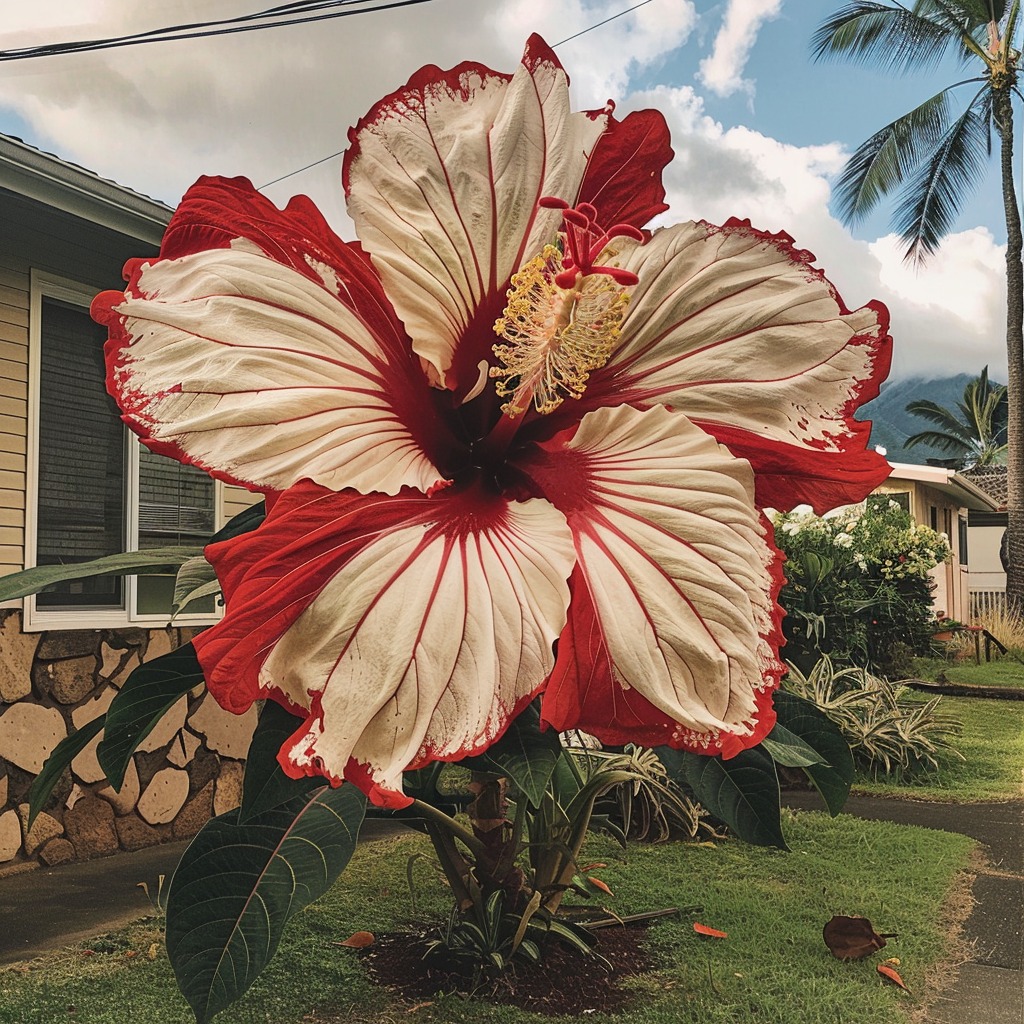
Creative Cocktails with Hibiscus
Hibiscus adds a unique twist to cocktails, offering a vibrant color and refreshing flavor that elevates any drink. Mixologists have embraced hibiscus as a key ingredient in crafting innovative cocktails that delight the senses.
One popular cocktail featuring hibiscus is the “Hibiscus Margarita.” To prepare this drink, combine tequila, lime juice, and hibiscus syrup in a shaker with ice. Shake well and strain into a glass rimmed with salt. Garnish with a slice of lime or a hibiscus flower for an eye-catching presentation.
Another creative option is the “Hibiscus Mojito.” Muddle fresh mint leaves and lime wedges in a glass, then add hibiscus tea and rum. Top with soda water and ice, stirring gently to combine. The result is a refreshing and fragrant cocktail that captures the essence of summer.
For those seeking non-alcoholic options, hibiscus can be used to create delightful mocktails. Combine hibiscus tea with fresh fruit juices, such as pineapple or orange, and top with sparkling water for a bubbly and refreshing beverage. Adding fresh herbs, like basil or mint, can enhance the flavor profile and create a sophisticated drink.
With its versatility and vibrant appeal, hibiscus is a fantastic ingredient for crafting creative cocktails and beverages that impress guests and elevate any gathering.
Hibiscus and Community Resilience
The Metaphor of Growth and Diversity
Hibiscus serves as a powerful metaphor for growth and diversity within communities. Just as hibiscus plants flourish in various environments, communities can thrive when they embrace diversity and foster inclusivity. The vibrant blooms of hibiscus symbolize the beauty that arises from different backgrounds, perspectives, and experiences.
In many ways, the resilience of hibiscus mirrors the resilience of communities facing challenges. Hibiscus plants can withstand harsh conditions, adapting to changes in their environment while continuing to bloom. Similarly, communities that embrace diversity and support one another can overcome obstacles and emerge stronger.
By recognizing the metaphorical significance of hibiscus, individuals can draw inspiration from its beauty and resilience. This awareness encourages a sense of unity and collaboration, reminding us that our differences can enrich our collective experience and contribute to a more vibrant society.
Hibiscus can also play a role in building community through shared values and interests. Gardening and cultivating hibiscus can bring individuals together, fostering connections and friendships among those who share a passion for nature and horticulture.
Community gardens that feature hibiscus and other flowering plants create spaces for collaboration and engagement. These gardens serve as gathering places where individuals can come together to learn, share knowledge, and celebrate the beauty of nature. The act of nurturing plants collectively fosters a sense of belonging and strengthens community bonds.
Moreover, hibiscus can be a focal point for cultural events and celebrations that highlight the diversity of a community. Festivals centered around hibiscus can showcase traditional practices, culinary delights, and artistic expressions, allowing individuals to share their heritage and connect with one another.
By leveraging the beauty and significance of hibiscus, communities can cultivate a sense of unity and resilience, celebrating their shared values and working together toward common goals.
Notes
Additional Resources for Hibiscus Enthusiasts
For those looking to explore the world of hibiscus further, numerous resources are available to enhance knowledge and appreciation. Books dedicated to hibiscus cultivation, gardening techniques, and culinary uses can provide valuable insights for both novice and experienced gardeners.
Online forums and communities focused on hibiscus gardening allow enthusiasts to connect, share experiences, and seek advice. Participating in these platforms can foster a sense of camaraderie and provide opportunities for learning from others’ successes and challenges.
Local botanical gardens and horticultural societies often host workshops and events centered around hibiscus and other flowering plants. Attending these gatherings can deepen understanding and appreciation for hibiscus while providing hands-on experience in cultivation and care.
Recommended Reading and Research Articles
Recommended reading on hibiscus includes a variety of books that cover topics such as cultivation, health benefits, and cultural significance. Titles such as “Hibiscus: The Complete Guide” and “The Healing Power of Hibiscus” offer comprehensive information for those interested in exploring the many facets of this remarkable plant.
Research articles published in scientific journals provide valuable insights into the health benefits and pharmacological properties of hibiscus. Accessing these studies can deepen understanding of hibiscus’s role in traditional medicine and its potential applications in modern health practices.
Online Communities and Support Groups
Joining online communities and support groups dedicated to hibiscus gardening can be a great way to connect with fellow enthusiasts. Platforms such as Facebook, Reddit, and gardening forums often have dedicated groups where members share tips, photos, and experiences related to hibiscus cultivation.
Participating in these communities can provide a wealth of knowledge and inspiration, as members exchange ideas and solutions to common challenges. Additionally, these platforms can foster friendships and connections with individuals who share a passion for hibiscus and gardening.
Mistakes to Avoid
Common Missteps in Growing Hibiscus
While hibiscus cultivation can be rewarding, there are common mistakes that gardeners should avoid to ensure success. One of the most prevalent missteps is overwatering, which can lead to root rot and other issues. It’s crucial to monitor soil moisture levels and allow the top inch of soil to dry out between waterings.
Another mistake is neglecting to provide adequate sunlight. Hibiscus plants thrive in full sun, and insufficient light can result in leggy growth and reduced flowering. Choosing the right location with ample sunlight is essential for promoting healthy growth and vibrant blooms.
Additionally, failing to prune hibiscus regularly can hinder growth and flowering potential. Pruning helps shape the plant and encourages new growth, so it’s important to incorporate this practice into the care routine.
Neglecting Environmental Considerations
Neglecting environmental considerations can have detrimental effects on hibiscus plants and the surrounding ecosystem. Using chemical pesticides and fertilizers can harm beneficial insects and disrupt the balance of the garden ecosystem. Opting for organic and eco-friendly alternatives can promote a healthier environment for both plants and wildlife.
Furthermore, overlooking the importance of native species can impact local biodiversity. Prioritizing the cultivation of native hibiscus varieties can support local ecosystems and contribute to the overall health of the environment.
Being mindful of environmental considerations not only benefits hibiscus plants but also fosters a sense of responsibility toward the planet and future generations.
Overlooking the Health Benefits
In the pursuit of cultivating hibiscus for its beauty, it’s easy to overlook the numerous health benefits it offers. Hibiscus tea, for example, is a delicious and nutritious beverage that can contribute to overall well-being. Failing to incorporate hibiscus into daily routines means missing out on its potential advantages for heart health, digestion, and more.
Educating oneself about the health benefits of hibiscus can encourage individuals to explore its culinary uses and integrate it into their diets. By recognizing hibiscus as more than just an ornamental plant, individuals can fully appreciate its contributions to both health and beauty.
Frequently Asked Questions
What are the best conditions for growing hibiscus?
Hibiscus thrives in full sun, requiring at least six hours of direct sunlight each day. It prefers well-draining soil that retains some moisture and benefits from regular watering. Ideal temperatures range from 60°F to 90°F (15°C to 32°C), and protecting hibiscus from frost is essential in colder climates.
Can hibiscus plants survive winter?
Some hibiscus species are hardy and can survive winter in temperate climates, while others may require protection from frost. Potted hibiscus can be brought indoors during colder months, while garden-planted varieties may benefit from mulching to insulate the roots. Consult local gardening resources for specific recommendations based on your region.
What are the health benefits of hibiscus tea?
Hibiscus tea is known for its potential to lower blood pressure, regulate cholesterol levels, and support digestion. It is rich in antioxidants and vitamin C, contributing to overall health and wellness. Regular consumption of hibiscus tea may offer protective benefits for cardiovascular health and metabolic function.
How can hibiscus be used in cooking?
Hibiscus can be used in various culinary applications, including salads, desserts, and beverages. Fresh hibiscus leaves can be added to salads, while dried hibiscus calyxes can be brewed into tea or used to create syrups for desserts. Experimenting with hibiscus in cooking can enhance flavors and add vibrant color to dishes.
Is hibiscus safe for everyone to consume?
Hibiscus is generally safe for most individuals when consumed in moderation. However, those with certain medical conditions, such as low blood pressure or allergies to hibiscus, should consult a healthcare professional before incorporating it into their diets. Pregnant and breastfeeding women should also seek guidance before consuming hibiscus tea or supplements.
Conclusion
Hibiscus stands as a testament to the beauty and complexity of the natural world. Its vibrant blooms, rich cultural significance, and numerous health benefits make it a cherished plant across various societies. From its role in enhancing landscapes to its potential contributions to holistic health, hibiscus embodies the interconnectedness of nature and human life.
As we explore the multifaceted world of hibiscus, we are reminded of the importance of nurturing our relationships with nature and each other. Whether cultivating hibiscus in our gardens, savoring a cup of hibiscus tea, or celebrating its cultural significance, we can appreciate the myriad ways this remarkable plant enriches our lives.
Ultimately, hibiscus invites us to slow down, reflect, and embrace the beauty that surrounds us. By fostering a deeper understanding of hibiscus and its many facets, we can cultivate a greater appreciation for the natural world and our place within it.



